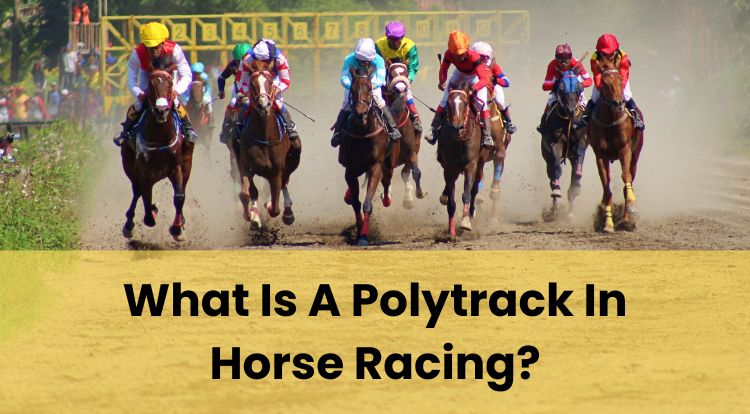
Horse racing has different types of surfaces used for races, and one of them is Polytrack. But what exactly is Polytrack, and why is it used?
Polytrack is a type of all-weather racing surface. Unlike traditional turf or dirt tracks, Polytrack is made from a mix of sand, synthetic fibres, and recycled rubber. It's designed to provide a consistent and safe surface for horses to run on.
One of the main benefits of Polytrack is that it handles various weather conditions well, ensuring races can take place even in bad weather. This makes it a popular choice for racecourses in the UK and elsewhere around the world.
Polytrack also reduces the risk of injury to horses. Its even and cushioned surface can help minimise strain on the horses' legs during races.
Understanding Polytrack is essential for anyone interested in horse racing, from beginners to seasoned enthusiasts. In this blog post, we'll take a closer look at this innovative racing surface and its significance in the world of horse racing.
What Is a Polytrack?
Polytrack is a specific type of racing surface used in horse racing. It is designed to offer a safer and more consistent experience for both horses and jockeys.
The surface is made from a unique blend of sand, synthetic fibres, and recycled rubber. These materials are mixed together and coated with a special kind of wax. This composition helps the track maintain good drainage and a uniform texture.
One of the standout features of Polytrack is its ability to perform well in different weather conditions. This means that races can still go ahead even when it's raining, which isn't always possible with grass or dirt tracks.
The cushioned surface of Polytrack reduces the impact on horses' legs. This can help to decrease the risk of injuries, making it a safer option compared to traditional racing surfaces. Moreover, Polytrack requires less maintenance than turf. This makes it a practical choice for racecourses looking for a reliable and durable racing surface.
In summary, Polytrack is an innovative all-weather racing surface that offers a balance of safety, consistency, and practicality in the world of horse racing.
What Is The Difference Between Polytrack And Tapeta?
Polytrack and Tapeta are both types of all-weather racing surfaces used in horse racing. Although they are similar in many ways, there are some key differences between them.
Polytrack is made from a mix of sand, synthetic fibres, and recycled rubber, all coated with wax. This blend helps the surface maintain a consistent texture and good drainage.
Tapeta, on the other hand, is a product developed by trainer Michael Dickinson. It also consists of sand, fibres, and wax, but the specific materials and proportions used are slightly different. This gives Tapeta its unique properties.
One of the main distinctions between the two surfaces is their composition. Tapeta uses a more fine-tuned blend of materials, which some believe offers better cushioning and less kickback (the particles thrown up by horses' hooves).
Both surfaces handle different weather conditions well, but some racecourses prefer Tapeta for its improved durability and maintenance needs.
In terms of safety, both Polytrack and Tapeta aim to reduce the risk of injury to horses by providing a soft, even surface. However, some trainers and jockeys might have personal preferences based on their experiences with each type.
In summary, while Polytrack and Tapeta are both designed to offer safe and consistent racing conditions, their specific material compositions and performance can vary, influencing the choice of surface at different racecourses.
Do Horses Run Faster On Dirt Or Synthetic?
When it comes to horse racing, one common question is whether horses run faster on dirt or synthetic surfaces. The answer isn't straightforward, as it depends on various factors.
Dirt tracks are traditional and have been used for many years. They can be quite fast, especially in dry conditions. However, dirt tracks can become muddy or heavy when it rains, which can slow horses down and make races less predictable.
Synthetic surfaces, like Polytrack, are designed to provide more consistency. Because they handle various weather conditions well, they offer a more reliable racing environment. Horses can maintain a steady pace on synthetic surfaces, whether it's wet or dry.
However, speed isn't the only factor to consider. The safety and health of the horses are also crucial. Synthetic surfaces are generally softer and more cushioned, which can help reduce the risk of injuries.
In summary, horses might achieve faster times on a well-maintained dirt track in perfect conditions. However, synthetic tracks offer consistent performance and better safety, making them a valuable choice in different weather conditions. The best surface often depends on individual preferences and specific racing conditions.
